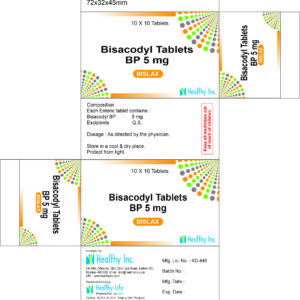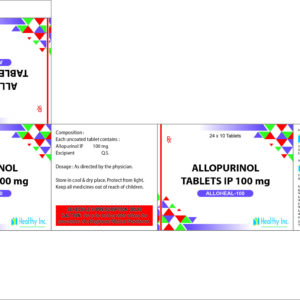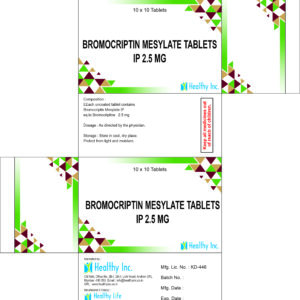Description
Rifampicin Isoniazid Ethambutol Tablet :
Healthy Incorporation and Healthy life pharma Pvt ltd are one of the leading manufacturer, supplier, and exporter of Rifampicin tablet 100 mg, Rifampicin tablet 300 mg, Rifampicin tablet 400 mg in India and serving the world with best quality pharmaceutical products.
Rifampicin Isoniazid Ethambutol Tablet Manufacturer:
Healthy incorporation and Healthy life pharma Pvt ltd, is Mumbai Based WHO GMP certified manufacturer of injection, tablets, capsules, liquid, dry syrups, pre-filled syringes, ointments etc. with an extensive experience of over 45 years in manufacturing and have reach in many countries. We are committed to provide a stock of highly effective Rifampicin tablets to our innumerable clients with the help of our well-experienced pharmaceutical specialists. We supply this tablet sin different strength & combination.
Uses of Rifampicin Isoniazid Ethambutol Tablet :
Rifampicin tablets belongs to a group of medicines called rifampicin antibiotics. Rifampicin tablet is an antibiotic which are used to cure infections like Tuberculosis, Leprosy, Legionnaires Disease, Brucellosis, and serious staphylococcal infections.
Additional Information of Rifampicin Isoniazid Ethambutol Tablet:
Product Name Rifampicin tablets
Composition & Active ingredients Rifampicin
Potency 100 mg, 300 mg,400 mg
Therapeutic use Tuberculosis
Packing 10 Tablets (1 Box)
Dosage As per Doctor Prescription
Precautions of Rifampicin Isoniazid Ethambutol Tablet:
Please inform doctor your medical history of diabetes, liver disease, kidney disease, bleeding problems, genetic enzyme disorder. Consult your doctor if you are pregnant or planning to get pregnant, or breast- feeding mother.
Side Effects of Rifampicin Isoniazid Ethambutol Tablet:
Most of the time there is no serious side effects. Some common side effects may arise after starting medication, as your body adjust to medicine.
Nausea
Vomiting
Diarrhea
Heartburn
Upset stomach
Fever
Headache
Dizziness
Drowsiness
Muscle weakness
Numbness
Confusion
For Detailed Product Information Contact Us at +91 7710003340, If you need Any assistance in selecting our Products that fits your requirements. If you’re looking for any product that you’re not seeing here, please contact our support team.
Rifampicin Isoniazid Ethambutol Tablets
Rifampicin, isoniazid, and ethambutol are three antibiotics commonly used in combination to treat tuberculosis (TB). These drugs are typically combined to create a regimen known as the “RIPE” regimen, which stands for Rifampicin, Isoniazid, Pyrazinamide, and Ethambutol. I noticed that you mentioned ethambutol instead of pyrazinamide. Pyrazinamide is another key drug in the standard TB treatment regimen.
Here’s a brief overview of each of these drugs:
Rifampicin (also known as rifampin):
It is an antibiotic that is effective against Mycobacterium tuberculosis, the bacterium that causes TB.
Rifampicin works by inhibiting the synthesis of RNA in the bacteria, thus disrupting its ability to replicate and causing it to die.
It is a cornerstone drug in the treatment of TB.
Isoniazid (INH):
Isoniazid is another antibiotic used in TB treatment.
It works by disrupting the synthesis of mycolic acids, which are essential components of the bacterial cell wall.
Isoniazid is effective against actively dividing as well as dormant (non-replicating) TB bacteria.
Ethambutol:Ethambutol is another antibiotic used in TB treatment.
It works by inhibiting the synthesis of arabinogalactan, an essential component of the mycobacterial cell wall.
It is often used as part of a combination regimen to reduce the likelihood of drug resistance and enhance treatment efficacy.
It’s important to note that TB treatment usually involves a combination of these drugs for an extended period, typically 6 to 9 months, depending on the specific circumstances of the patient and the drug susceptibility of the TB bacteria. The combination of these drugs helps to prevent the development of drug-resistant TB and ensures effective treatment.
Please keep in mind that the specific regimen and duration of treatment should be determined by a healthcare professional, as TB treatment can be complex and must be tailored to the individual patient’s needs. It is essential to complete the full course of treatment as prescribed by a healthcare provider to ensure a successful outcome and reduce the risk of drug-resistant TB strains.
ifampicin, isoniazid, and ethambutol are three important antibiotics used in the treatment of tuberculosis (TB). These drugs are often combined into a single tablet or capsule to create a fixed-dose combination regimen for the treatment of TB. The combination of these drugs is highly effective in treating tuberculosis and is often the first-line treatment for both active TB disease and latent TB infection.
Here’s a brief overview of each of these drugs:
Rifampicin (also known as rifampin):
Rifampicin is an antibiotic that is effective against a wide range of bacteria, including the bacteria that cause tuberculosis (Mycobacterium tuberculosis).
It works by inhibiting the synthesis of RNA in the bacteria, which disrupts their ability to replicate and survive.
Rifampicin is a key component of TB treatment regimens and is often administered daily.
Isoniazid (INH):
Isoniazid is another antibiotic used to treat TB. It is particularly effective against the actively growing bacteria.
Isoniazid is an important part of TB treatment and is typically administered in combination with rifampicin.
Ethambutol:Ethambutol is another antibiotic used in the treatment of TB.
It works by inhibiting the formation of the cell wall in the bacteria, which is essential for their growth.
Ethambutol is often used in combination with rifampicin and isoniazid.
The combination of these three drugs is used to treat TB because it helps prevent the development of drug resistance and is more effective in eradicating the bacteria. The fixed-dose combination tablet or capsule makes it easier for patients to adhere to the treatment regimen.
It’s important to note that the use of these drugs should be supervised by a healthcare provider, and the duration of treatment may vary depending on the type and severity of TB. Treatment regimens can last several months to ensure the complete eradication of the bacteria and prevent the development of drug-resistant strains. Additionally, these drugs may have side effects and potential drug interactions, so they should be taken under medical supervision.
Rifampicin, isoniazid, and ethambutol are three different medications commonly used in the treatment of tuberculosis (TB). These medications are often combined in a single tablet to form a combination therapy for TB treatment. This combination therapy is essential in the treatment of tuberculosis to prevent the development of drug resistance.
Here’s a brief overview of each of these medications:
Rifampicin: Rifampicin, also known as rifampin, is an antibiotic that is effective against Mycobacterium tuberculosis, the bacterium that causes tuberculosis. It works by inhibiting the replication of the bacteria and is a crucial component of TB treatment. Rifampicin is often associated with its characteristic orange or red discoloration of bodily fluids, including urine, sweat, and tears.
Isoniazid: Isoniazid is another antibiotic used in the treatment of tuberculosis. It is particularly effective against actively growing bacteria and is used to prevent the progression of TB infection. Isoniazid is often used in combination with other TB medications and is also given as a preventive treatment to individuals at high risk of developing TB.
Ethambutol: Ethambutol is a third antibiotic used in TB treatment. It works by inhibiting the synthesis of the bacterial cell wall, making it difficult for the bacterium to grow and divide. Ethambutol is used in combination with rifampicin, isoniazid, and other drugs to treat TB. It is often used to prevent the development of drug resistance.
Combination tablets containing these three medications are commonly prescribed in TB treatment to ensure that patients receive all the necessary drugs in one convenient dose. The specific formulation, dosage, and treatment regimen may vary depending on the patient’s condition and the guidelines of the healthcare provider or health organization. It is important to follow the prescribed treatment plan, take the medications as directed, and complete the full course of treatment to ensure successful TB therapy and reduce the risk of drug resistance. Additionally, it is essential to consult with a healthcare professional for the most up-to-date information on TB treatment, as guidelines may evolve over time.
Rifampicin, isoniazid, and ethambutol are three important antibiotics used in the treatment of tuberculosis (TB). They are often combined in a single tablet to create a fixed-dose combination therapy. This combination is commonly referred to as “Rifampicin-Isoniazid-Ethambutol” or “RIE.”
Here’s a brief overview of each of these drugs:
Rifampicin (also known as rifampin): Rifampicin is an antibiotic that is particularly effective against Mycobacterium tuberculosis, the bacterium that causes tuberculosis. It works by inhibiting the RNA synthesis of the bacteria, thus preventing them from multiplying. Rifampicin is often one of the key drugs in the treatment of TB.
Isoniazid: Isoniazid is another antibiotic used in the treatment of TB. It works by inhibiting the synthesis of mycolic acids, a critical component of the bacterial cell wall. This disruption weakens the cell wall and eventually kills the bacteria.
Ethambutol: Ethambutol is another antibiotic used in TB treatment. It interferes with the formation of the bacterial cell wall, leading to the death of the bacteria. Ethambutol is often included in the combination therapy to prevent the development of resistance to rifampicin and isoniazid.
The combination of rifampicin, isoniazid, and ethambutol is often prescribed for patients with drug-sensitive tuberculosis. This combination is known for its effectiveness in treating the disease and for preventing the development of antibiotic resistance. However, it’s important to note that the specific dosage and treatment regimen may vary depending on the patient’s condition and the guidelines of the healthcare provider. Patients should always follow their healthcare provider’s instructions when taking these medications. Additionally, these drugs may have potential side effects, and regular monitoring is required during treatment to detect and manage any adverse effects.
Rifampicin, isoniazid, and ethambutol are three drugs commonly used in combination to treat tuberculosis (TB) infections. These drugs are often used together to create a multi-drug therapy that helps prevent the development of drug resistance in TB bacteria. Here’s some information about each of these drugs:
Rifampicin (also known as Rifampin):
Rifampicin is an antibiotic that is highly effective against Mycobacterium tuberculosis, the bacteria responsible for causing tuberculosis.
It works by inhibiting the action of an enzyme needed for the synthesis of RNA in the bacteria.
Rifampicin is typically part of the first-line treatment regimen for TB and is usually taken orally.
Common side effects can include gastrointestinal upset, skin rashes, and liver function abnormalities.
Isoniazid (INH):
Isoniazid is another antibiotic used to treat TB.
It is effective against actively growing tuberculosis bacteria and also latent TB infections.
Isoniazid works by inhibiting the synthesis of mycolic acids, which are crucial for the cell walls of TB bacteria.
It is usually taken orally and often as part of a combination therapy with other TB drugs.
Side effects may include peripheral neuropathy and liver problems, particularly in individuals with specific genetic variations.
Ethambutol:Ethambutol is another TB drug that helps prevent the growth of the TB bacteria.
It works by inhibiting the formation of the bacterial cell wall.
Ethambutol is usually taken orally and is often used in combination with other anti-TB drugs.
Common side effects can include optic neuritis, which can lead to vision problems, so regular eye examinations are important when taking this medication.
The combination of these three drugs, often referred to as “RIPE” therapy, is a standard treatment for drug-sensitive tuberculosis. It’s important to note that treatment for TB can be complex and should be prescribed and supervised by a healthcare professional. The duration and specific regimen may vary depending on the patient’s condition, and close monitoring is necessary to ensure the effectiveness of the treatment and to manage any potential side effects.
Note: Healthy Incorporation and Healthy life pharma Pvt ltd tries to ensure that all information, whether in relation to the products, services, offerings provided as part of this website is correct at the time of inclusion on the website, Unauthorised use of any materials contained on this website may violate copyright laws, trademark laws, the laws of privacy and publicity, certain communications statutes and regulations and other applicable laws and regulations. All copyright and other intellectual property rights in this material are owned by Healthy Incorporation and Healthy life pharma Pvt ltd. Please connect with us to discuss precise product specifications and requirements and obtain advice on which products are suitable for your requirement or you can write to us
Rifampicin + Isoniazid + Ethambutol HCl Tablets (Combi Kit) , रिफैम्पिसिन + आइसोनियाज़िड + एथमब्युटोल एचसीएल टैबलेट (कॉम्बी किट) ,Rifampicina + Isoniazida + Etambutol HCl Comprimidos (kit combinado), Comprimés de Rifampicine + Isoniazide + Ethambutol HCl (Kit Combi) , أقراص ريفامبيسين ملغ + أيزونيازيد ملغ + إيثامبوتول هيدروكلوريد ملغ (مجموعة كومبي) , 利福平 毫克 + 異煙肼 毫克 + 鹽酸乙胺丁醇 毫克錠劑(組合試劑盒) ,Rifampicina + Isoniazida + Etambutol HCl Comprimidos (Kit Combi), Таблетки Рифампицин + Изониазид + Этамбутол HCl (комбинированный набор) ,リファンピシン + イソニアジド + エタンブトール塩酸塩錠 (コンビキット) ,suppliers India, Exporters,Wholesalers India, Distributors India, Generic Supplier,who gmp certified manufacturer








